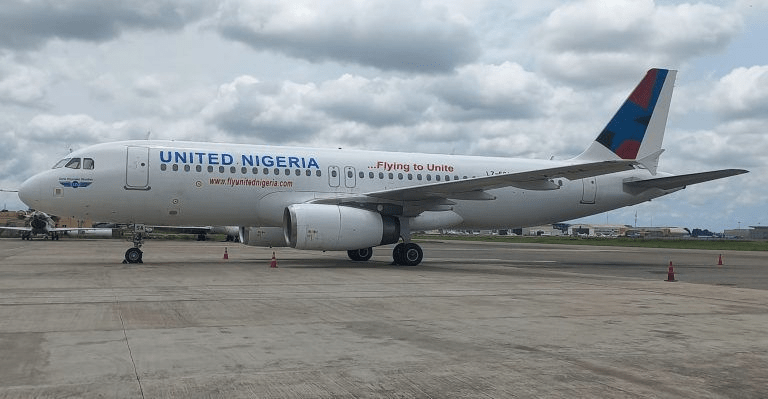As the controversy surrounding United Nigeria Airlines, UNA, and flight diversion deepens, new revelations have come to light, shedding fresh light on the unfolding events.
These emerging facts offer a compelling glimpse into the complexities surrounding this contentious incident.
Vanguard reported the event that occurred last Sunday, involving a United Airlines Flight NUA 0504 departing Lagos for Abuja, in which the said flight landed in Asaba.
The airline had blamed the incident on bad weather, a report that did not align with that of the Nigerian Airspace Management Agency, NAMA.
However, fresh facts have emerged from the incident, as the Flight Dispatcher Association of Nigeria, FLIDAN, disclosed that they followed the Nigeria Civil Aviation Regulations, Part 8-Operations, by filing a flight plan with the Aeronautical Information Service, AIS, which was transmitted to the Control Tower.
In a statement signed by the association’s Secretary General, Victoria Adegbe, the aircraft first departed Lagos for Abuja. It first alternates between Enugu and Port Harcourt. The time of flight departure was 13:00, and the total duration is 55 minutes with six hours of endurance.
The statement further reads: “The weather folder given showed Abuja weather was ok. The pilot called the Air Traffic Control Tower for clearance to depart for Asaba.
“The Tower granted the request against the legal flight plan submitted by the Flight Dispatcher.
“Both the pilot and the ATC seem not to follow what was filed, which, by implication, meant that they disregarded “operational control” of the flight dispatcher, which empowers a 50% joint and equal responsibility for the safety of the flight to the flight dispatcher.
“The airline’s operational control, which allowed a pilot to generate his own operational flight plan, OFP, thereby taking full responsibility for the dispatch release, is an outright breach of the Nigeria Civil Aviation Regulations, NCAR Part 8.
“The airlines’ operations control further contravened the NCAR, which states that an airline pilot shall take to the destination airport a copy of the flight plan, dispatch release, and load manifest. By implication, if the pilot had the flight plan on him, he would have gotten his destination right; the dispatch release, if it was with him, summarizes the departure and destination, which were clearly disregarded.
“The ATC should not have granted a scheduled flight clearance to depart to a destination that was not as filed by the Flight Dispatcher.
“The airline, in a show of absolute disregard for aviation law, went ahead to suspend the flight dispatcher who upheld the license issued by the Nigerian Civil Aviation Authority and carried out his job as required by law.
“We call on the NCAA to beam a search light on the operations control of the airline that has seized operational control from the flight dispatcher.
“The ATC might want to look into the regulations that govern granting clearance contrary to the filed flight plan.”



